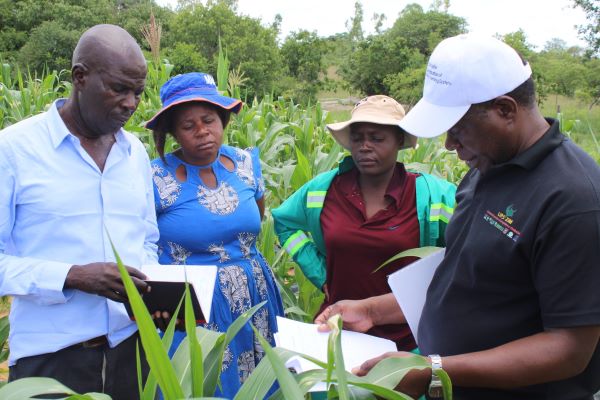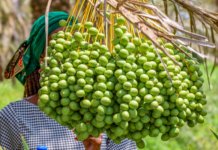
Smallholder farming communities in districts such as Buhera have embraced feed production and water conservation innovations deployed by the International Maize and Wheat Improvement Center (CIMMYT) as part of the Livestock Production Systems in Zimbabwe project (LIPS-Zim).
The project, funded by the European Union (EU) led by the International Livestock Research Institute and CIMMYT, champions the crop-related aspects of interventions and aims to increase livestock productivity in Zimbabwe’s semi-arid regions.
The project specifically aims to promote increased adoption of climate-relevant innovations in livestock-based production systems and improved surveillance and control of livestock diseases. While focused on livestock, the project is based on the premise that the performance of the livestock sector depends heavily on crop husbandry. By the same token, the livestock sector has bi-products that directly impact the productivity of crops.
Zimbabwe is a country that is well suited to mixed farming systems. Most smallholder farmers have treated livestock and crop production as mutually exclusive, but the two enterprises can have a significant complementary effect on each other.
CIMMYT Cropping Systems Agronomist Isaiah Nyagumbo is leading the development of crop husbandry innovations aimed at increasing feed production that are poised to benefit smallholder farmers’ crop productivity and enhance the conditioning of livestock, especially cattle.
Despite extension recommendations for farmers not to grow maize in these regions, studies show that 60% of the arable land is still occupied by maize. This is due to maize’s popularity among farmers thanks to its diverse uses.
One solution is to support farmers with the most appropriate cultivars and most effective production technologies to help them be more resilient to climate change induced challenges.
To contribute towards LIPS-Zim’s objective for increased feed production, CIMMYT scientists are testing and demonstrating the use of drought tolerant and nutritious maize varieties along with a wide range of leguminous species such as mucuna, dolichos lab-lab and cowpea, which are grown mostly as intercrops.
Efforts are also being made to develop innovative water conservation options through reduced or no-till planting basins and tied ridging systems reinforced with different mulching options including conventional organic and synthetic artificial mulches. These are then being compared to traditional conventional mouldboard ploughing systems.
So far, the results are exciting and helping farmers to see the productivity gains from applying different technologies. Smallholder farmers who volunteered to work with CIMMYT on these innovations, are optimistic about widespread adoption once the trials are concluded as the technologies can suit different levels of investment by farmers.
“We have a lot of farmers visiting us as they observe a diversity of technologies on our plot. The artificial mulch concept is one which is very new, and farmers are curious as to how it works. They can observe for themselves that, especially when used with tied ridges, it is very effective in retaining moisture,” one couple, the Nyekete’s, said.
“The same applies to organic mulch. Government extension workers have, over the years, been encouraging us to plant our maize under the Pfumvudza/Intwasa conservation agriculture model, and in it is the use of organic materials as mulch.
The level of compliance in areas such as Buhera has been low, where people practice Pfumvudza/Intwasa without fully applying all the principles, especially soil cover. The water conservation trials are providing evidence that when one dedicates themselves to mulching their crop, whether using organic or synthetic mulches, the maize productivity is comparatively higher. As you can see, the maize plots with these water harvesting technologies are showing high vegetative growth in comparison to conventionally planted maize.”
Over the years, there has been a slow adoption of new innovations emanating from scientific research usually conducted on research stations. The use of on-farm research trials and demonstrations helps smallholder farmers to participate in the research process and co-create technologies, which shortens the adoption period and stimulates adoption at scale. This approach enables more farmers, who are not hosts, to benefit from the technologies showcased in the trials and to observe and learn from the trials.
Despite the artificial mulching technology demonstrating impressive results so far, Nyagumbo cautions that before the technology can be promoted at scale, more research, as well as proof of concept for these systems is needed.
“Firstly, we see that the quality of the material used has a big bearing on the ability to reduce evaporation from the soil. Secondly, some farmers have observed germination challenges due to the synthetic materials creating an attractive habitat for rodents that eat the maize seed before it germinates.
“Thirdly, the returns from such investments need to be justified by highly attractive economic returns arising from high yields that will also enable farmers to intensify their production systems by producing their food needs from much smaller areas. Further studies and analyses therefore need to be conducted,” Nyagumbo added.
“Furthermore, so far the idea of tied ridging combined with organic mulches also seems to offer a highly attractive option for farmers that will contribute to increased feed productivity from the enhanced grain and crop residues, since increased biomass output also means increased livestock feed availability.”.







